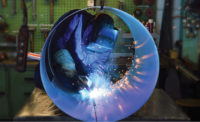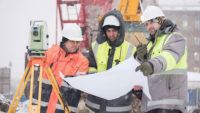Maintaining a safe work environment is essential inside the heating, ventilation and air conditioning (HVAC) mechanical rooms that support large commercial buildings, corporate campuses, institutional facilities and industrial plants. The failure to monitor these rooms properly for leaking refrigerant, toxic and combustible gas hazards has led to tragic accidents with deadly consequences.
The best way to prevent such accidents is to audit HVAC mechanical room safety systems to ensure the right gas detectors are in place and installed in the proper locations for adequate protection. While this should be done regularly, it is especially important to review mechanical room safety systems whenever HVAC, boiler, electrical and fuel equipment are retrofitted or upgraded to support new functional requirements, including improved energy efficiency.
The safety industry has worked diligently over the past decade to improve the effectiveness of refrigerant, toxic and combustible gas sensors. The latest digital technologies have been employed at the sensor and systems levels to add greater intelligence and communications capabilities. This newest generation of gas sensors and systems is more robust, less susceptible to false alarms and easier to install with lower maintenance over a longer life.
HVAC rooms
A building’s mechanical room is the hub of its heating, ventilation and air conditioning system (Fig 1). This can include central utility plants, boiler and chiller rooms, mechanical and electrical rooms and fuel rooms. The equipment within these rooms has the potential to leak refrigerant, toxic or combustible gases, which are dangerous, costly and environmentally harmful gases.
Refrigerant gas is actually considered a toxic gas, and this can be a potential surprise for some workers. Although refrigerants have low toxicity, at high concentrations they can displace oxygen which makes it difficult to breathe. Leaking refrigerant gas that results in oxygen deficiency can cause serious accidental injury or even death to workers, which is a violation of safety regulations under OSHA.
Furthermore, these chemicals are controlled substances regulated by the U.S. Environmental Protection Agency (EPA), which means not only are they dangerous to worker health and safety, but they are harmful to the environment. Many of these refrigerants are categorized as ozone depleting substances and are highly scrutinized.
Gas detectors satisfy the requirements for equipment room emissions monitoring included in EPA regulations. In addition to the EPA, there are the specific requirements of the American Society of Heating, Refrigeration, and Air Conditioning Engineers (ASHRAE) Standard 15 and applicable state and local building codes to consider as well.
ASHRAE 15 states: (1) Each machinery room shall contain a detector located where a refrigerant leak would concentrate. (2) The detector shall trigger an audible and visual alarm both inside and outside the mechanical room and activate mechanical ventilation. In addition for economic reasons, refrigerant leak detection is encouraged due to the high cost of refrigerant gases lost during leak events.
Detector placement
Refrigerant gas detectors and monitoring systems should be mounted to the unit vertically: Do not mount the unit to HVAC structures that are subject to vibration and shock (such as piping). Do not locate the unit near excessive heat sources, direct solar heating or in a wet and damp location. For proper cooling, allow at least three inches of clearance around all surfaces except the mounting surface.
Sample point locations
Depending on the gas monitoring system’s manufacturer’s recommendations, a gas sample point can be remotely located up to 150 ft (46 m) from the monitor (500 ft. [152 m] for 0.18” [4.6 mm] ID tubing) in an area where refrigerant vapors are most likely to leak or accumulate. It is widely accepted to locate the sample point near the barrel of the chiller and on adjacent corners to enhance ability to monitor leaks.
As refrigerants are heavier than air, be sure to monitor the refrigerant in locations like pits, stairwells and trenches. If possible, monitor the vent line of the chiller. Remember to monitor the cylinder storage area if inside or near the chiller room in case of cylinder leakage.
Choosing a gas monitoring system
There are several refrigerant gas detector and monitoring systems available from multiple manufacturers (Fig 2) that are designed for refrigerant applications in mechanical rooms. They all have their advantages and some of them have limitations. Be sure to set up a list of any key monitoring capabilities that you think are necessary.
To develop your check list, here are some suggested questions to ask suppliers:
- Is the monitoring system compliant with ASHRAE 15?
- At what ppm level does the detector register the presence of gas?
- Does the system include multi-point monitoring? Can it be easily expanded?
- Does the controller have multiple relays for fault and alarm alerts, as well as connection to a horn and strobe (required by ASHRAE 15)?
- Does the system controller include integrated BACnet or Modbus for direct digital communication to the facility’s centralized control system?
Review the setup requirements to be sure the system is intelligent enough to include plug-and-play capability, eliminating the need for time-consuming configuration tasks.
Ask about the maintenance requirements and frequency of maintenance.
Conclusion
Refrigerant gas safety is important and should not be overlooked. Refrigerant gas is toxic, can lead to worker oxygen deficiency accidents, is harmful to the environment when released, and is expensive. These issues can be avoided with the newest generation of refrigerant gas monitoring systems that meet ASHRAE 15, rapidly detect gas, are easy to install and use.



